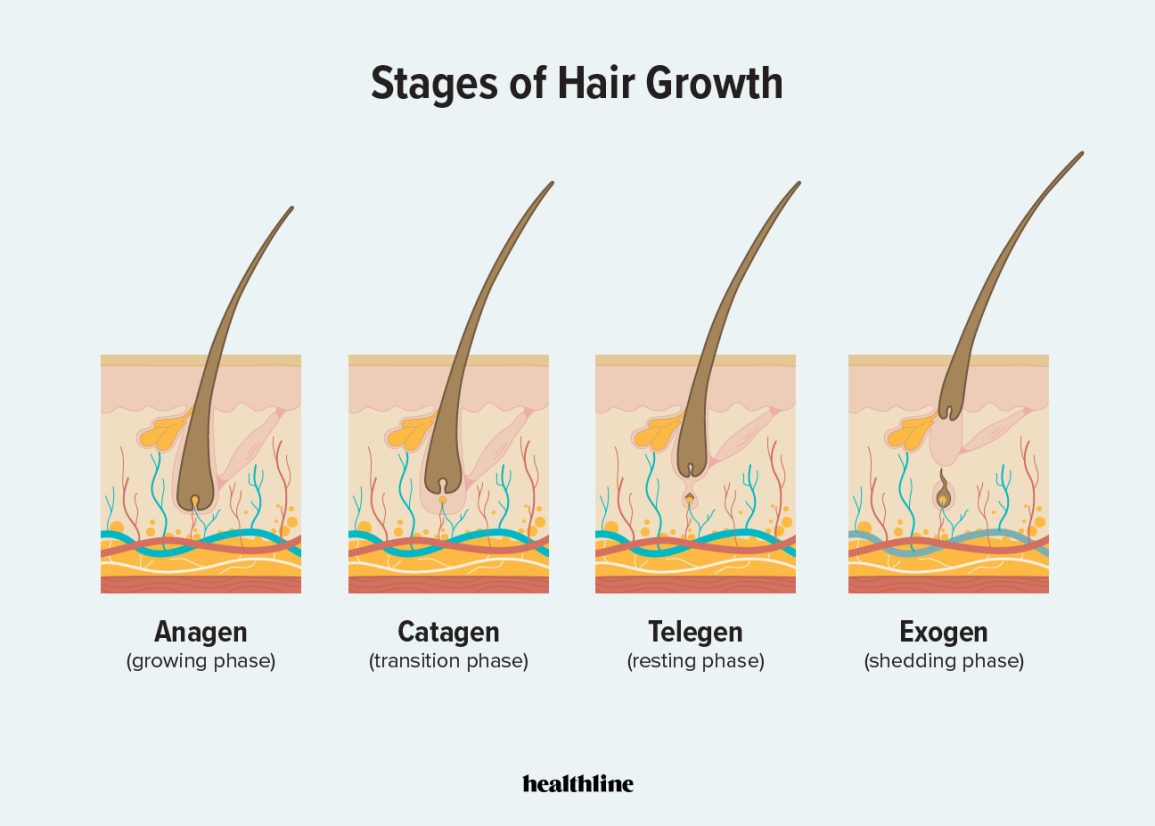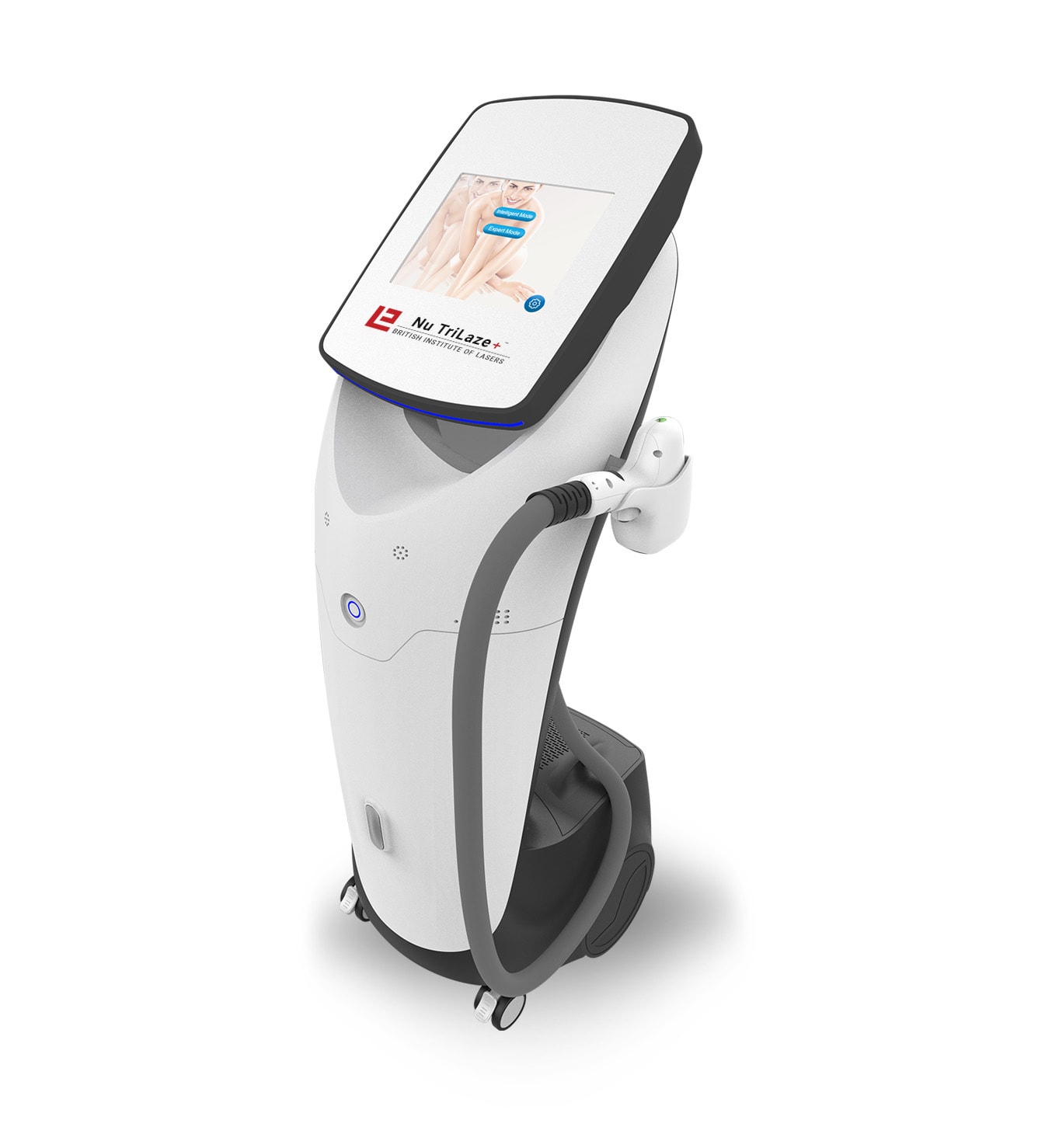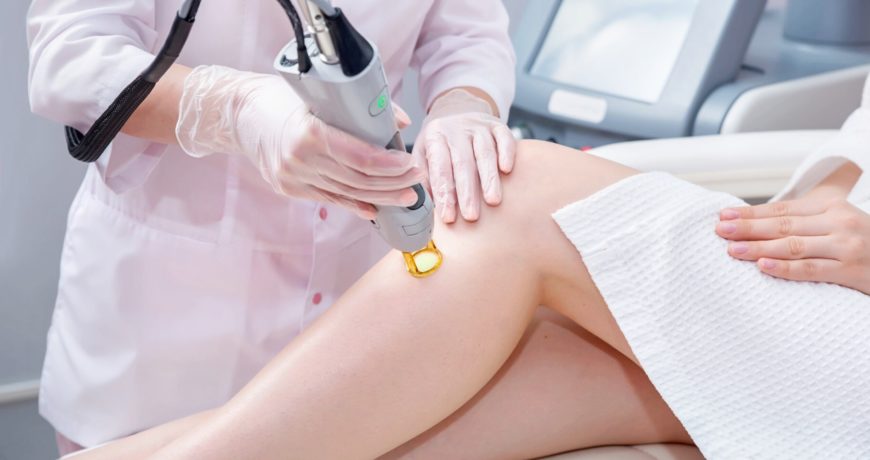No products in the cart.
Laser Hair Removal Laser Types
There are several types of lasers used for hair removal. Each varies in terms of the wavelength they emit and the skin and hair types they’re best suited for. This article will guide you through the different types of lasers and their applications to help you decide on the best laser hair removal machine for your clinic.
01. Nd:YAG Lasers
Nd:YAG lasers, specifically the long-pulsed Nd:YAG lasers, are a newer innovation in the hair removal industry. They’re known for their ability to penetrate deeper into the skin, targeting the hair follicle without damaging the surrounding skin tissue. This technology is highlighted in our newest laser hair removal technology article.
Nd:YAG Laser Applications
Nd:YAG lasers, compatible with all skin types, can be used to address a variety of issues, including pigment disorders, tattoo removal, skin rejuvenation, and permanent hair removal treatments.
The Nd:YAG laser operates by emitting a wavelength that can penetrate deep into the skin. This feature makes it ideal for dark skin tones, which traditional lasers may struggle with. This factor also makes the Nd:YAG laser an excellent choice for laser hair removal for Afro-Caribbean hair.
Is Nd:YAG Laser Hair Removal Permanent?
Like other lasers, the Nd:YAG laser requires multiple treatments to tackle the hair growth cycle, which consists of four phases:
- Anagen – the growing phase
- Catagen – the transition phase
- Telogen – the resting phase
- Exogen – the shedding phase

Image source: Healthline
Permanent laser hair removal proves most effective during the anagen phase when approximately 20% of hairs are in this stage at any given time. Therefore, a course of treatments is essential to target every hair as it enters the anagen phase, which typically lasts around three months. By directing the laser at the follicles during this phase, permanent hair removal can be achieved.
02. Diode Lasers
Alongside Nd:YAG lasers, diode lasers have outpaced all previous laser types in terms of performance, safety, and cost-effectiveness. By 2020, diode lasers accounted for over 39% of the hair removal market in the US.
Diode lasers function by heating selected chromophores – the colored part of a tissue, while leaving the surrounding tissue untouched. This precision targeting allows the laser to damage each hair follicle, preventing regeneration. It is ideal for treating areas with thicker hair and is a popular choice for men looking to remove coarse back and chest hair.
For salons, the most effective hair removal machines incorporate both Nd:YAG and diode lasers, providing comprehensive service to a diverse range of clients.
How Many Sessions Are Needed For Diode Laser Hair Removal?
The number of sessions required for diode laser hair removal depends on the area and type of hair being treated. Generally, between six and eleven appointments are needed, and after the first session, you should observe a hair reduction of around 10 – 25%.
The Nu TriLaze Plus from the British Institute of Lasers employs both types of lasers to remove unwanted hair and provide effective skin rejuvenation treatments. This machine also utilizes Alexandrite lasers, which we’ll delve into next.

03. Alexandrite Lasers
While older than the Nd:YAG and diode lasers, the Alexandrite laser is frequently combined with the newer technologies to offer a well-rounded process. This laser type is especially effective for lighter skin tones and for treating fine facial hair. You can learn more about the Alexandrite laser in comparison to other laser types in our comprehensive guide.
How Does Alexandrite Hair Removal Work?
Alexandrite lasers operate similarly to diode lasers by targeting specific chromophores and heating them to destroy the hair follicle, without affecting the surrounding tissue.
Being one of the fastest lasers, it can remove hair from a back in as little as ten minutes. Its short wavelength makes the Alexandrite laser ideal for lighter skin tones, and it is often used to treat fine facial hair.

Image source: LivSmooth
04. Ruby Lasers
The ruby laser was the first system developed for hair removal. While not as popular as the Nd:YAG, diode, and alexandrite lasers, it emits a short, ruby-colored wavelength that is perfect for pale skin tones and fine hair.
Is The Ruby Laser Effective?
The ruby laser can’t perform rapid pulses, and the pause between shots minimizes discomfort but lengthens the treatment time. Therefore, it’s best suited for smaller areas. However, for these limited regions, the ruby laser proves extremely effective.
05. IPL
Although technically not a laser, Intense Pulsed Light (IPL) is a light therapy type that can be used for several therapies, including hair removal, skin rejuvenation, acne infection treatment, and reducing superficial broken veins.
IPL vs Laser: Which is Better?
While IPL is similar to a laser, it uses a broad spectrum of light with multiple wavelengths, resulting in a scattered, unfocused, and less effective outcome.
Often described as feeling like being snapped by an elastic band, IPL is effective when removing darker hair. The light penetrates the skin, targets the melanin in the hair, and uses heat to destroy the hair follicles. However, due to the lack of focused light, hair removal by IPL can take many sessions, and the results are often inferior compared to laser treatments.
Is an IPL Machine Worth The Investment?
Most proprietary hair removal kits available at your local pharmacy are IPL machines, and these can be expensive to purchase. While most at-home devices can slow down hair growth, very few can permanently reduce hair, making professional salon treatment a more effective choice for permanent hair removal.
Investing in a hair removal machine that combines several lasers in one device allows you to target different skin and hair types and offer various treatments, making it a cost-effective choice for your salon.
What can we conclude?
Selecting the right laser hair removal machine for your clinic is crucial to providing effective and tailored treatments to your clients. Each laser type offers unique benefits and is suited to different skin and hair types:
- Nd:YAG Lasers are versatile and effective for all skin types, especially darker skin tones.
- Diode Lasers are renowned for their precision and efficacy, particularly for thicker hair.
- Alexandrite Lasers are ideal for lighter skin tones and fine hair, offering rapid treatment.
- Ruby Lasers remain a reliable option for pale skin and small treatment areas.
- IPL provides a broad-spectrum approach but may require more sessions for similar results to lasers.
By understanding these technologies and their applications, you can make an informed decision that enhances your clinic’s service offerings, ensuring you can meet the diverse needs of your clientele efficiently and effectively. Investing in a machine that combines multiple laser types can be a strategic choice, maximizing both treatment versatility and client satisfaction.
We hope this guide helps you understand the different types of lasers and aids you in making an informed decision. For more in-depth information about laser hair removal machines and their costs, visit our page on How Much Should a Good Laser Hair Removal Machine Cost?
Additional References:
https://www.statisticbrain.com/laser-hair-removal-statistics/ – Laser Hair Removal Statistics
https://pubmed.ncbi.nlm.nih.gov/11870792/ – Effectiveness of Nd:Yag lasers with one year follow up


